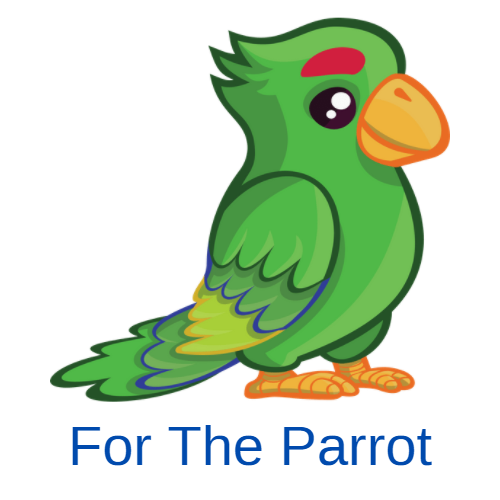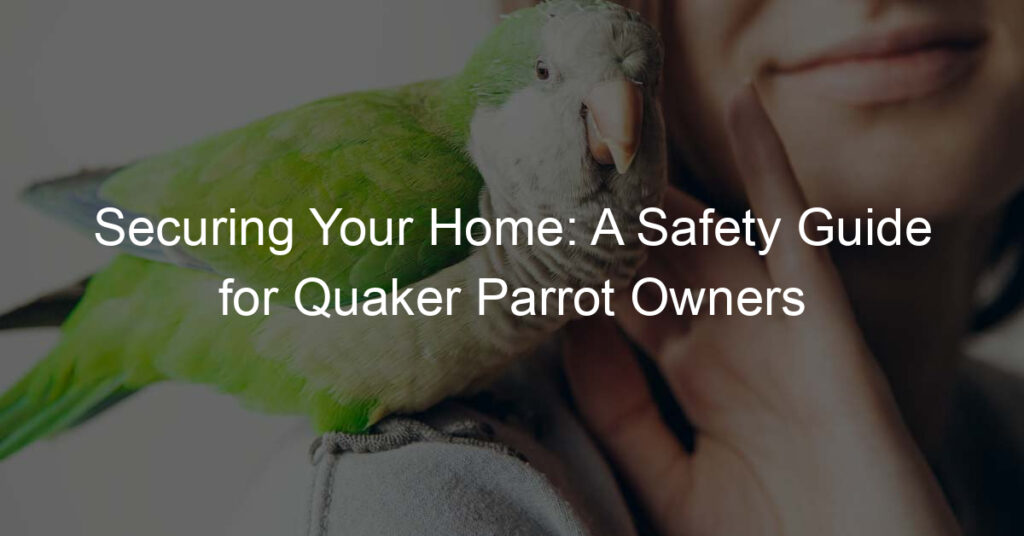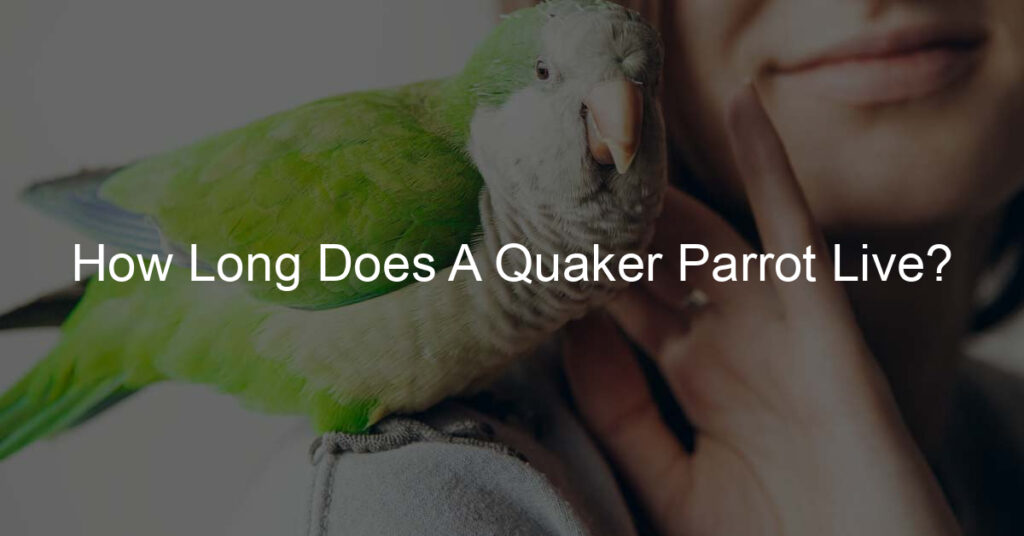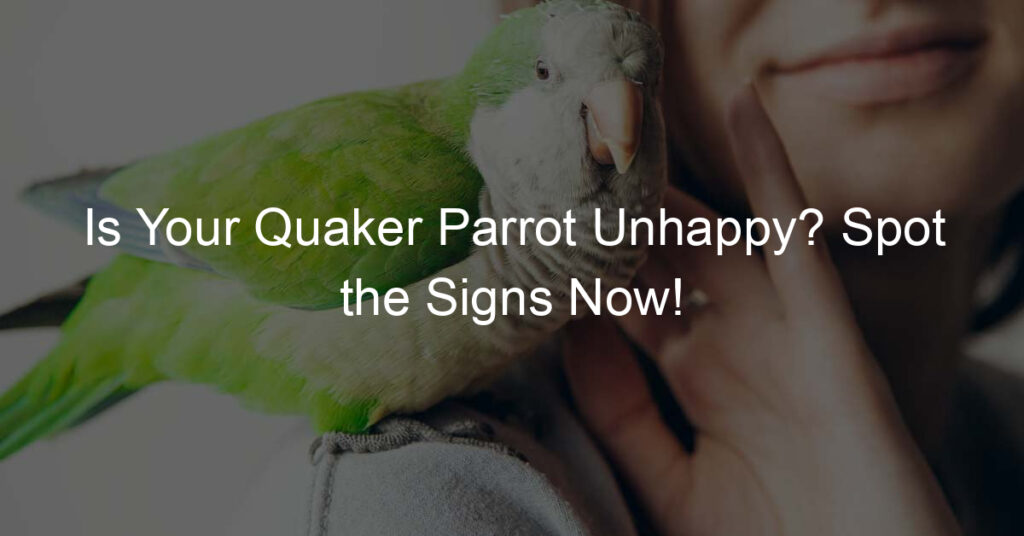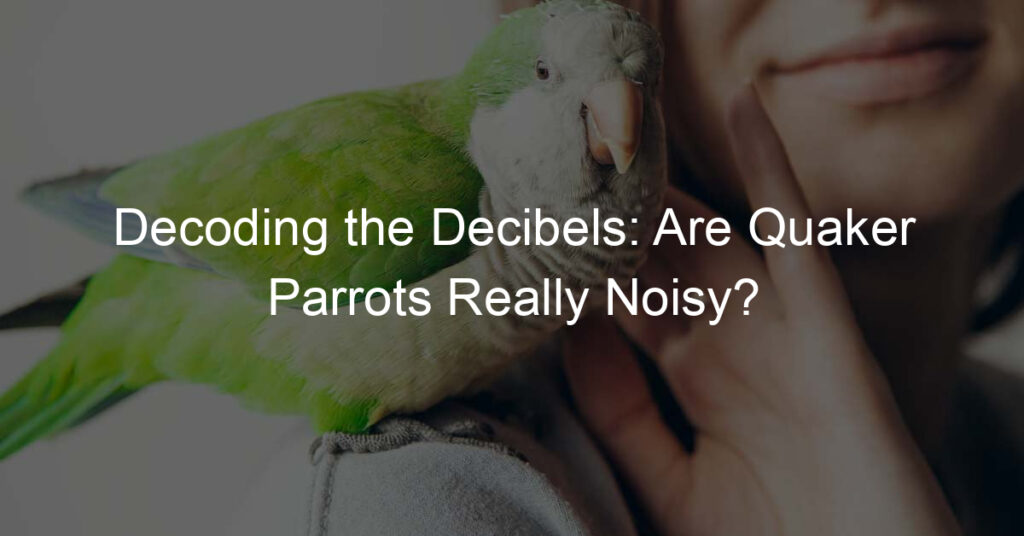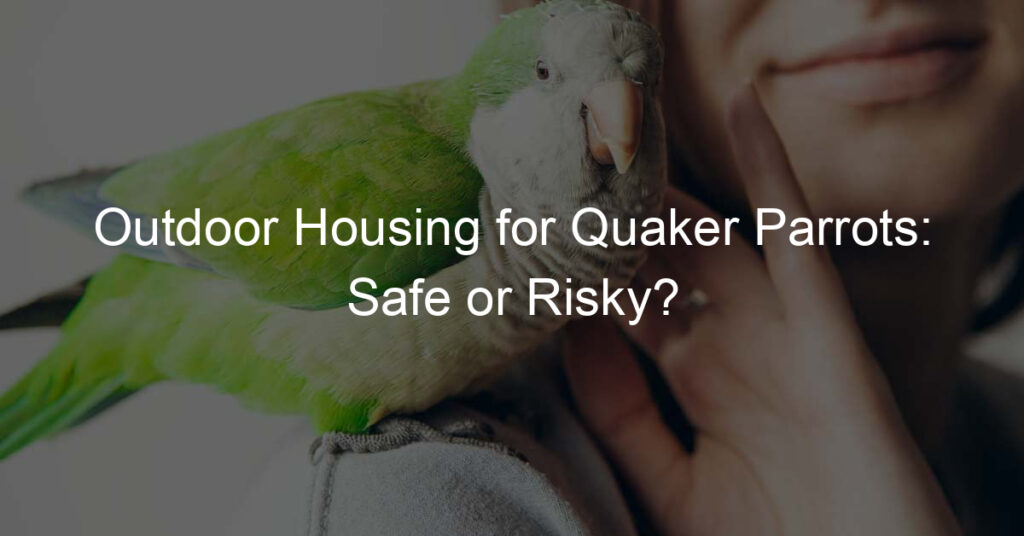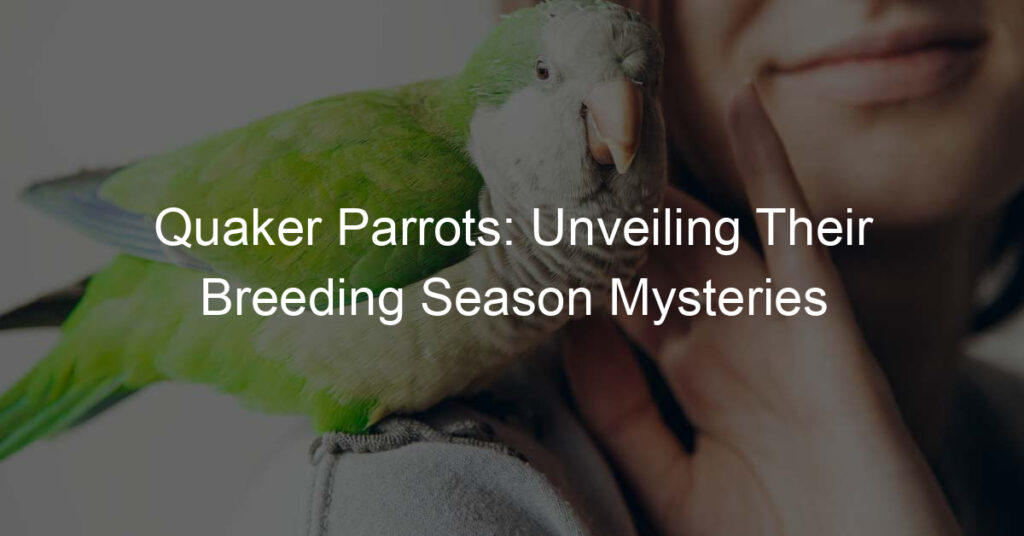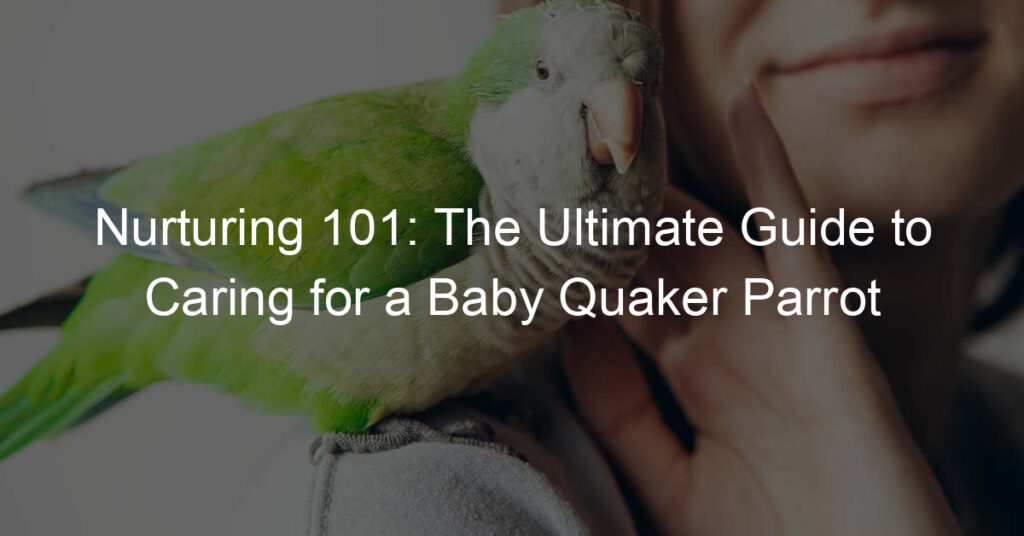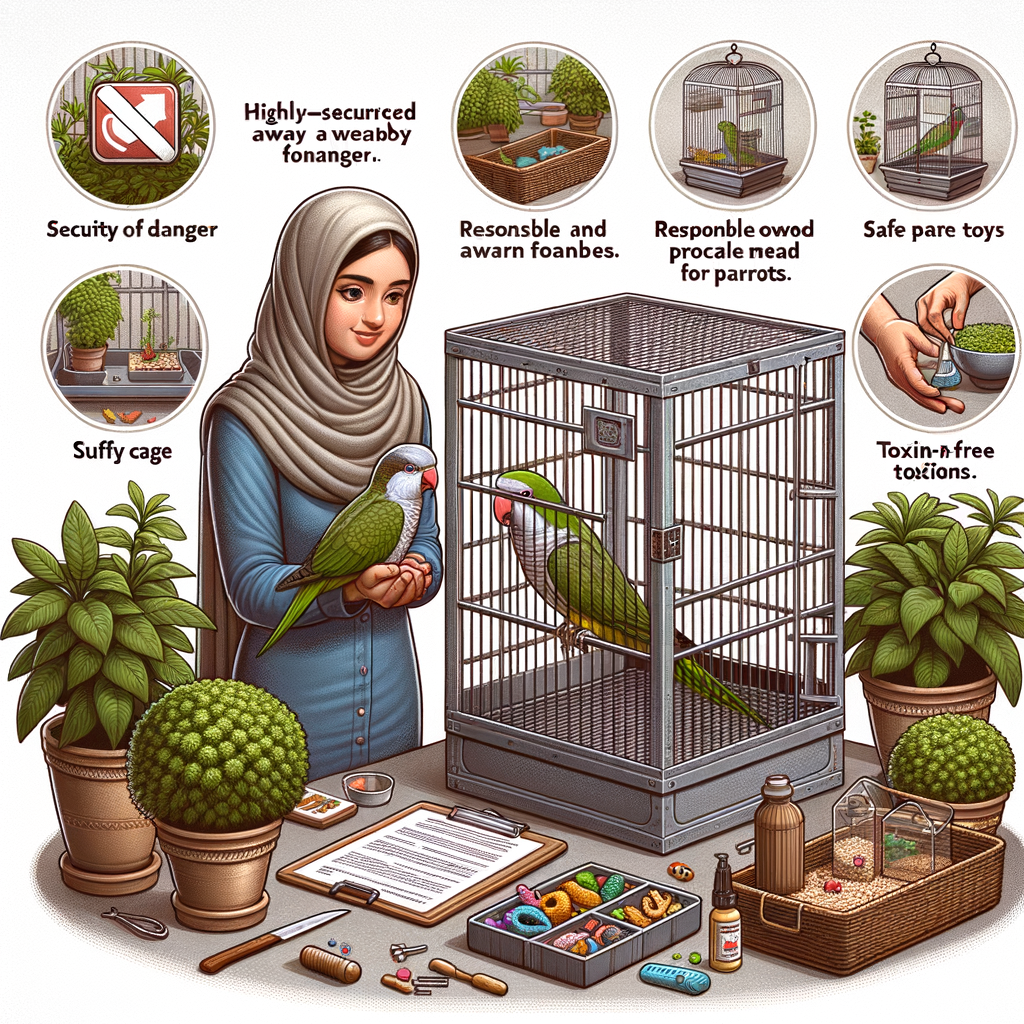
Introduction to Quaker Parrot Safety
When it comes to the well-being of our feathered friends, safety is paramount. Quaker Parrots, also known as Monk Parakeets, are intelligent and social creatures that require a safe and stimulating environment to thrive. In this section, we will delve into the importance of Quaker Parrot safety and common hazards they may encounter in a home environment.
- Understanding the Importance of Quaker Parrot Safety
- Common Hazards in the Home Environment for Quaker Parrots
Quaker Parrots are known for their playful and curious nature. While this makes them delightful companions, it also means they can easily find themselves in dangerous situations. Ensuring their safety is not just about preventing harm, but it’s also about providing a secure environment that allows them to express their natural behaviors without risk. A safe environment contributes to their physical health, mental well-being, and overall life span.
Despite our best intentions, our homes can present several hazards for Quaker Parrots. These can range from toxic foods and plants, to small spaces where they can get stuck, to household items that can cause injury. For instance, non-stick cookware can release fumes that are toxic to parrots. Open windows and doors, as well as fans, can pose a risk of injury or escape. Even common items like electrical cords can be dangerous if chewed. Understanding these hazards is the first step towards creating a safer home for your Quaker Parrot.
In the following sections, we will explore how to create a safe home environment for your Quaker Parrot, protect them from household hazards, and provide proper nutrition and exercise. By the end of this guide, you will be well-equipped to ensure the long-term safety and well-being of your Quaker Parrot.
Creating a Safe Home Environment for Your Quaker Parrot
Creating a safe and comfortable home environment for your Quaker parrot is crucial to its well-being. One of the most important aspects of this is choosing the right cage. Let’s delve into the details.
Choosing the Right Cage
When it comes to selecting a cage for your Quaker parrot, two main factors to consider are the size and the material of the cage. The placement of the cage within your home is also a significant consideration.
- Size and Material Considerations for Quaker Parrot Cages
- Placement of the Cage within the Home
Quaker parrots are active and playful birds, so they need a cage that provides ample space for them to move around. A cage with a width and depth of at least 18 inches and a height of 24 inches is recommended. This will allow your parrot to spread its wings and hop around comfortably.
The material of the cage is equally important. Stainless steel cages are a popular choice because they are durable and easy to clean. Avoid cages made from toxic materials such as lead or zinc, as these can harm your parrot.
The location of your parrot’s cage can greatly affect its mood and behavior. A quiet, well-lit area away from direct sunlight and drafts is ideal. Avoid placing the cage in the kitchen, as cooking fumes can be harmful to your parrot. Also, ensure the cage is placed at a height where your parrot can interact with family members, as Quaker parrots are social creatures.
Remember, your Quaker parrot’s cage is its home within your home. Making the right choices in terms of size, material, and placement can go a long way in ensuring your parrot’s happiness and well-being.
Ensuring a Safe Habitat Inside the Cage
Creating a safe and comfortable habitat inside the cage is crucial for your Quaker Parrot’s well-being. This involves selecting safe toys and perches and maintaining the cage properly. Let’s delve into these aspects.
- Choosing Safe Toys and Perches
Quaker Parrots are active and intelligent birds that need mental stimulation. Toys and perches can provide this stimulation, but it’s essential to choose them wisely. Avoid toys with small parts that can be swallowed or sharp edges that could cause injury. Opt for toys made from bird-safe materials like untreated wood, vegetable-tanned leather, and food-grade plastics.
Perches should be of varying diameters to exercise the parrot’s feet. Natural wood perches are ideal as they also help to keep the bird’s beak and nails trimmed. Avoid perches made from toxic woods like cherry, peach, apricot, and nectarine.
- Proper Cage Maintenance for Quaker Parrot Safety
Regular and thorough cage maintenance is key to your Quaker Parrot’s health. This includes daily removal of waste and uneaten food, weekly cleaning of food and water dishes, and monthly deep cleaning of the entire cage with bird-safe disinfectants.
Always ensure the cage is dry before your parrot returns to prevent the growth of mold and bacteria. Regularly inspect the cage for any loose bars or damaged parts that could harm your bird. Remember, a clean and safe cage contributes to a happy and healthy Quaker Parrot.
| Key Points | Details |
|---|---|
| Safe Toys | Choose toys without small parts or sharp edges, made from bird-safe materials. |
| Safe Perches | Opt for perches of varying diameters, made from non-toxic woods. |
| Cage Maintenance | Perform daily, weekly, and monthly cleaning tasks using bird-safe disinfectants. |
Protecting Your Quaker Parrot from Household Hazards
As a Quaker Parrot owner, it’s crucial to be aware of the potential dangers that lurk within your home. Let’s explore some common household hazards and the steps you can take to ensure your feathered friend’s safety.
Common Household Hazards
Our homes are filled with items that, while harmless to us, can pose significant risks to our Quaker Parrots. Here are a few to keep an eye out for:
- Identifying potential dangers in your home
- Quaker Parrot safety measures to mitigate these risks
Common household items like cleaning products, certain foods, and even some houseplants can be harmful to Quaker Parrots. For example, avocados, chocolate, and onions are toxic to most birds. Similarly, household cleaners contain chemicals that can be deadly if ingested or inhaled by your parrot. It’s essential to keep these items out of your parrot’s reach.
There are several steps you can take to protect your Quaker Parrot from these hazards. Firstly, always keep harmful foods and chemicals stored securely. Secondly, consider replacing toxic houseplants with bird-safe alternatives. Lastly, supervise your parrot when it’s out of its cage to prevent it from getting into mischief.
By being aware of these common household hazards and taking the necessary precautions, you can create a safer environment for your Quaker Parrot. Remember, the key to your parrot’s long-term health and happiness lies in its safety and well-being.
Quaker Parrot Protection from Other Pets
While Quaker parrots are social creatures, introducing them to other pets requires careful planning and supervision. Ensuring their safety when other pets are present is crucial to maintain a harmonious household.
- Introducing your Quaker Parrot to other pets
- Ensuring Quaker Parrot safety when other pets are present
Introducing your Quaker parrot to other pets should be a gradual process. Start by allowing your pets to observe each other from a distance. This can be done by placing the parrot’s cage in a common area where your other pets spend most of their time. This allows them to get used to each other’s presence without any direct interaction.
Once they seem comfortable with each other’s presence, you can start supervised face-to-face introductions. Always be present during these meetings and be ready to intervene if any signs of aggression are shown. Remember, each pet is unique and may require different lengths of time to adjust to the new situation.
Even after successful introductions, always supervise interactions between your Quaker parrot and other pets. Never leave them alone together unsupervised. This is because, despite their size, Quaker parrots are known to be quite fearless and may provoke larger pets, leading to potential harm.
It’s also important to provide your Quaker parrot with a safe space where they can retreat if they feel threatened. This could be a high perch or a separate room where other pets are not allowed. Regularly check for any signs of stress or discomfort in your parrot, as these could indicate issues with other pets.
In conclusion, while it is possible for Quaker parrots to coexist with other pets, it requires careful planning, supervision, and ongoing monitoring to ensure their safety. Always prioritize your parrot’s safety and well-being when introducing them to other pets.
Quaker Parrot Care: Nutrition and Exercise
Understanding the nutritional needs of your Quaker Parrot and providing them with adequate exercise is crucial for their overall health and well-being. Let’s delve into these aspects in more detail.
Feeding Your Quaker Parrot
Feeding your Quaker Parrot a balanced diet is essential for their health. Let’s explore the dietary needs of a Quaker Parrot and the safe and unsafe foods for them.
- Understanding the dietary needs of a Quaker Parrot
- Safe and unsafe foods for Quaker Parrots
Quaker Parrots, like all birds, have specific dietary needs. They require a balanced diet of seeds, fruits, vegetables, and grains. It’s also important to provide them with a source of calcium, such as cuttlebone or mineral block. Quaker Parrots should be fed a variety of foods to ensure they receive all the necessary nutrients.
Safe foods for Quaker Parrots include fruits like apples, bananas, and berries, vegetables like carrots, peas, and broccoli, and grains like rice and quinoa. However, avoid feeding them avocado, chocolate, caffeine, and alcohol as these can be toxic to birds. Also, remember to wash all fruits and vegetables thoroughly to remove any pesticides.
By understanding your Quaker Parrot’s dietary needs and providing them with a variety of safe foods, you can help ensure their health and longevity.
Exercise and Mental Stimulation
For a Quaker Parrot to live a healthy and happy life, it is essential to provide them with both physical exercise and mental stimulation. Let’s delve into these two crucial aspects of parrot care.
- Importance of Exercise for Quaker Parrot Health and Safety
- Providing Mental Stimulation to Prevent Boredom and Related Issues
Exercise is a key component in maintaining the health and well-being of your Quaker Parrot. Regular physical activity helps to keep their muscles strong and their heart healthy. It also aids in digestion and can prevent obesity, a common issue in pet birds.
Exercise also plays a role in ensuring the safety of your parrot. A well-exercised bird is less likely to engage in destructive behaviors that can lead to injuries. For example, a bored parrot might chew on wires or other household items, which can be dangerous.
Providing opportunities for exercise can be as simple as allowing your parrot out of their cage to fly around a safe room under supervision. You can also provide toys that encourage physical activity, such as ladders, swings, and ropes.
Mental stimulation is just as important as physical exercise for your Quaker Parrot. These intelligent birds need activities to keep their minds active and prevent boredom. Boredom can lead to behavioral issues such as feather plucking and excessive noise making.
There are many ways to provide mental stimulation for your parrot. Puzzle toys that require your bird to solve a problem to get a treat can be a great option. Teaching your parrot tricks or commands can also be a fun and engaging activity for both of you.
Remember, a stimulated parrot is a happy parrot. By providing both physical exercise and mental stimulation, you can ensure your Quaker Parrot lives a long, healthy, and contented life.
Conclusion: Ensuring Long-Term Safety for Your Quaker Parrot
As we wrap up our discussion on Quaker Parrot safety, it’s essential to remember that the well-being of your feathered friend is a lifelong commitment. It’s not just about setting up a safe environment once, but continually learning and adapting to ensure your parrot’s safety and happiness.
- Review of key takeaways for Quaker Parrot home safety
Let’s recap some of the key points we’ve covered:
| Topic | Key Takeaway |
|---|---|
| Safe Home Environment | Ensure your parrot’s cage is spacious, clean, and free from hazards. Provide toys for mental stimulation. |
| Household Hazards | Keep your parrot away from toxic plants, chemicals, and small, swallowable objects. Ensure windows and doors are secure. |
| Nutrition and Exercise | Provide a balanced diet and plenty of opportunities for physical activity to keep your parrot healthy. |
- Continued learning and vigilance for Quaker Parrot care
Remember, parrot care is a journey, not a destination. Stay informed about the latest in parrot care and be vigilant in observing your parrot’s behavior and health. Regular vet check-ups are also crucial.
As the famous author Anatole France once said, “Until one has loved an animal, a part of one’s soul remains unawakened.” Let’s awaken our souls by providing the best care for our Quaker Parrots, ensuring their long-term safety and happiness.
